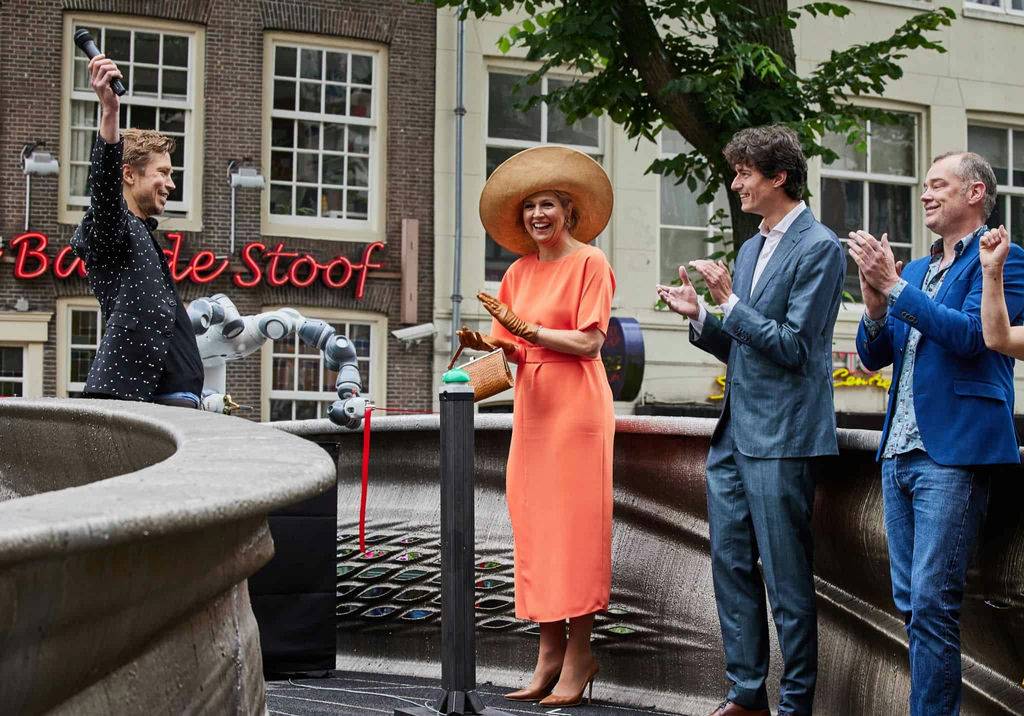MX3D’s 3D-printed steel footbridge was unveiled by Máxima, Her Majesty the Queen of the Netherlands, in the city centre of Amsterdam. The first 3Dprinted steel bridge is now open to the public in the oldest neighbourhood of Amsterdam.
The futuristic multi-award-winning bridge, designed by Joris Laarman Lab with Arup as lead engineer, is now placed over one of the oldest canals in Amsterdam’s red-light district. The installation of the bridge is the culmination of several years of work. MX3D kicked off this project in 2015 when it proposed printing a metal bridge with its innovative large-scale, robotic 3Dprinting technology, creating a playful, inspiring example of how digital tools can create a new form language for architectural objects.
The MX3D Bridge is also a ‘living laboratory”. Equipped with a state-of-the-art sensor network, the “Smart Bridge” is powering a cutting edge research project. In concert with academic and industry researchers, the City of Amsterdam will use the bridge’s data streams to explore the role of IoT systems in the built environment. Sensors have been incorporated into the bridge that can gauge how pedestrians behave. This can, for example, give an idea of how busy it is and what the atmosphere is among the throngs of tourists, which can be relevant for ‘crowd control’, but also how quickly the bridge wears.
Gijs van der Velden, Director, MX3D adds that “The sensors meanwhile provide MX3D with information that can be used for subsequent constructions. This may show, for example, that the bridge would have been up to its task with less material and a lighter construction”
25 people work at MX3D. The company supplies the technology used in making the bridge to industries such as shipbuilding and the automotive industry. At MX3D, he takes the robot arms with a metal printer, complete with software and sensors. In the meantime, the company’s ten metal printers are also delivering new constructions, such as a thirty-metre-long railing for a bridge to Oostenburg.
MX3D claims that large metal objects can be printed with material savings of up to 80 percent. Earlier this year, a fund from the Doen Foundation and a sustainability fund from the province of North Holland invested 2.25 million euros in the company.
To complete this project MX3D worked with Autodesk, Heijmans, Joris Laarman Lab, ArcelorMittal along with support from Lead Structural Engineer Arup, The Alan Turing Institute Data Centric Engineering Programme, Lloyd’s Register Foundation, Air Liquide, ABB and Lenovo.
Important contributions have also been made by: FORCE Technology, HBM, OERLIKON by Lincoln Electric, FARO Technologies, STV Welding Supplies, MousBV, and Plymovent Group. The public partners are Technische Universiteit Delft, Imperial College London, University of Twente, Amsterdam Institute for Advanced Metropolitan Solutions (AMS Institute) and the City of Amsterdam.




